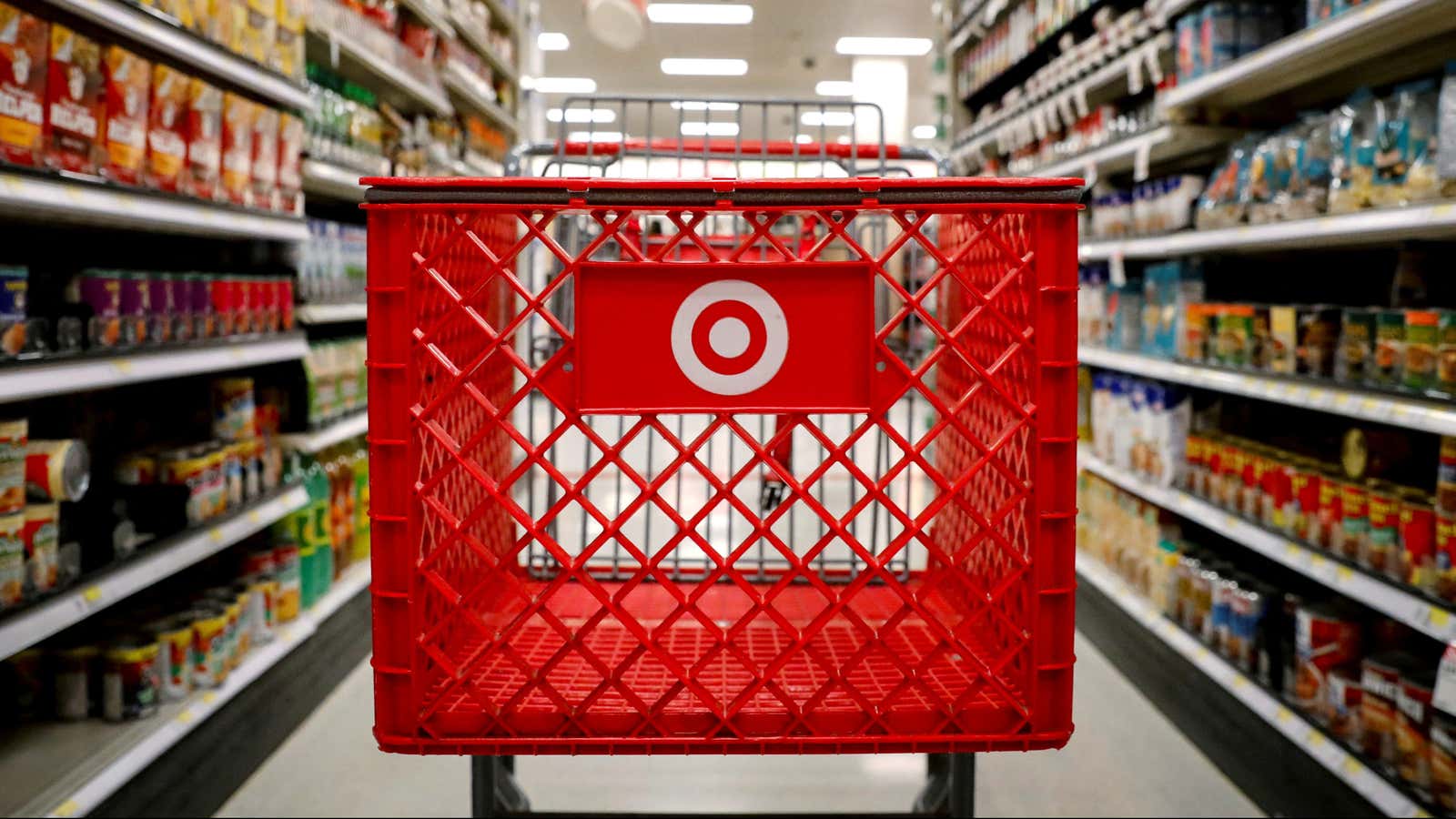Target wasn’t ready for how quickly its US customers would change their shopping habits in 2022.
Earlier in the pandemic, locked-down Americans flush with cash from government stimulus checks invested heavily in upgrading their houses. But this year, US shoppers have cut their spending on home goods like TVs and kitchen appliances—and left retailers like Target holding extra inventory they can’t sell and don’t have space to store.
“While we anticipated a post-stimulus slowdown and we expected consumers to continue refocusing spending away from goods and into services, we didn’t anticipate the magnitude of that shift,” Target CEO Brian Cornell told investors on a May 18 earnings call.
The company’s net income fell 52% in the first quarter of 2022 compared to the same period in 2021.
Target’s supply chain woes
High freight costs have compounded Target’s problems. COO John Mulligan told investors the company underestimated how bad supply chain constraints would be this year, and Target will have to spend $1 billion more on freight in 2022 than it expected to at the start of the year. Widespread covid lockdowns in China have created congestion at Asian sea ports, and rising gas prices have driven up the cost of trucking.
To make matters worse, Target over-ordered big, bulky home goods, like patio furniture, TVs, and kitchen appliances. Those items are especially costly to ship because they take up so much room inside shipping containers—and their size also makes them extra costly to store in warehouses.
After Target paid a premium to import those bulky home goods, it realized its customers didn’t want to buy them. There wasn’t enough room in its existing warehouses to store all of its unwanted lawn chairs and toaster ovens, so Target had to rent new warehouse space—at ultra-high prices in the tightest warehouse market ever—to store its excess inventory. Then, it slashed prices on its leftover products to entice customers to buy them and free up storage space.
“Rather than jamming store sales floors with excess product, which would have made them more difficult to shop, our team secured temporary storage capacity…and marked items down to clear them and keep our presentations fresh and inspiring,” Mulligan said.
Company executives told investors those steep discounts were responsible for most of Target’s lost profits.
Growing inventories cut into retailers’ profits
Although at the start of the pandemic retailers faced product shortages that caused them to miss out on sales, the tide is now turning the other way. Many businesses have stocked up too much, according to Dana Telsey, founder of Telsey Advisory Group. This forces them to offer discounts and cuts into their profit.
Walmart, which reported earnings the day before Target, saw a 33% increase in inventory due to what management called “aggressive” buying, noting that it would take a few quarters to sell off the excess goods.
National retail sales rose 0.9% in April, showing Americans were still spending, but there are signs shoppers are beginning to pull back without any new stimulus payments and inflation rising.
The slowdown in spending has been uneven depending on the kind of product. Walmart said sales of higher-ticket items like game consoles, home appliances, and outdoor grills held up, but customers are trading down to private labels on basic items like groceries.
Meanwhile, sales of products like evening gowns, wedding cakes, and concert tickets—items that consumers gave up earlier in the pandemic—are on the rise. The same goes for travel bookings.
However, Americans spending on experiences may also tighten their pursestrings before long. Goldman Sachs chief economist Jan Hatzius said in a report last week the bank is “assuming a deceleration in services spending in May and June and an outright decline in retail spending in May.”
